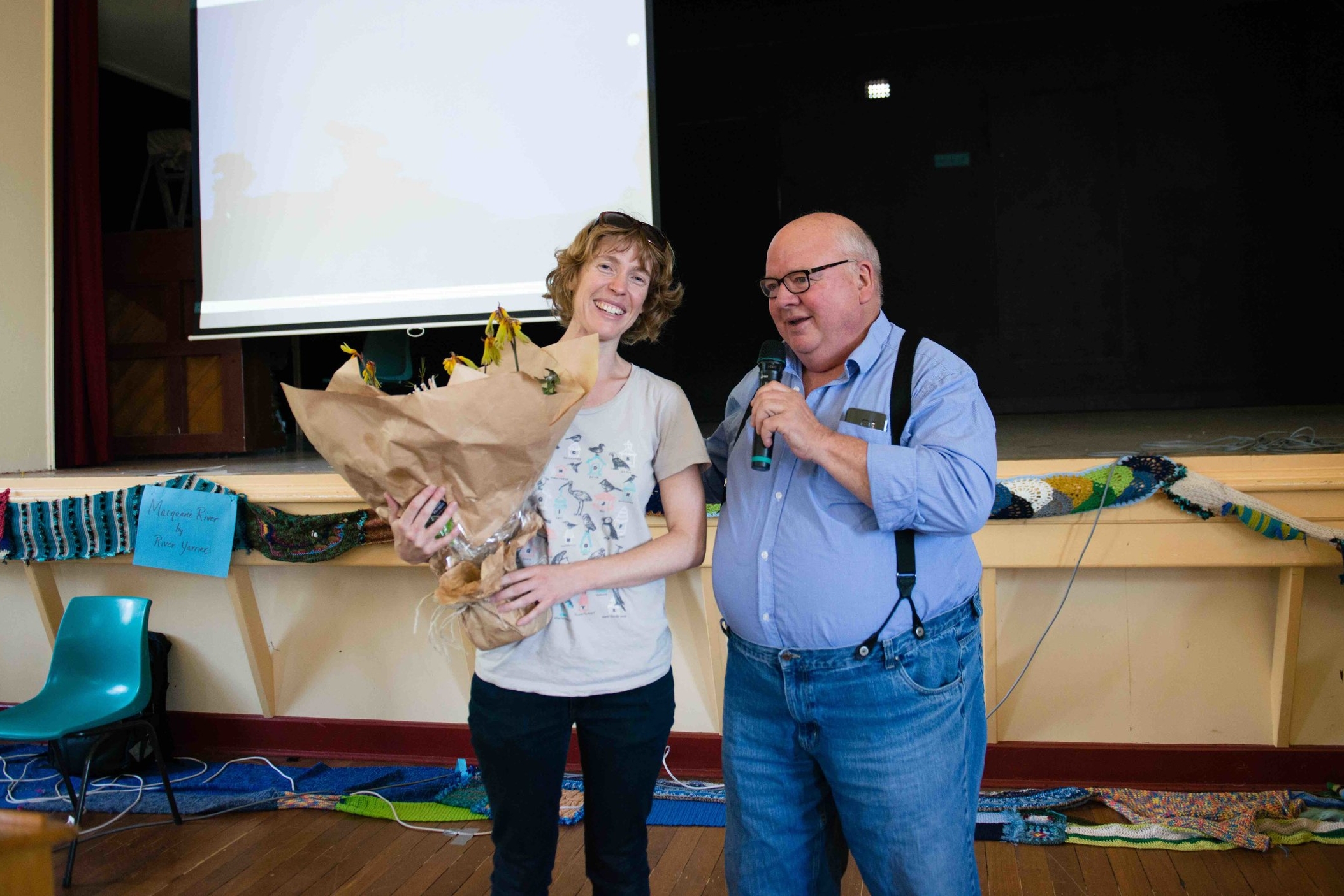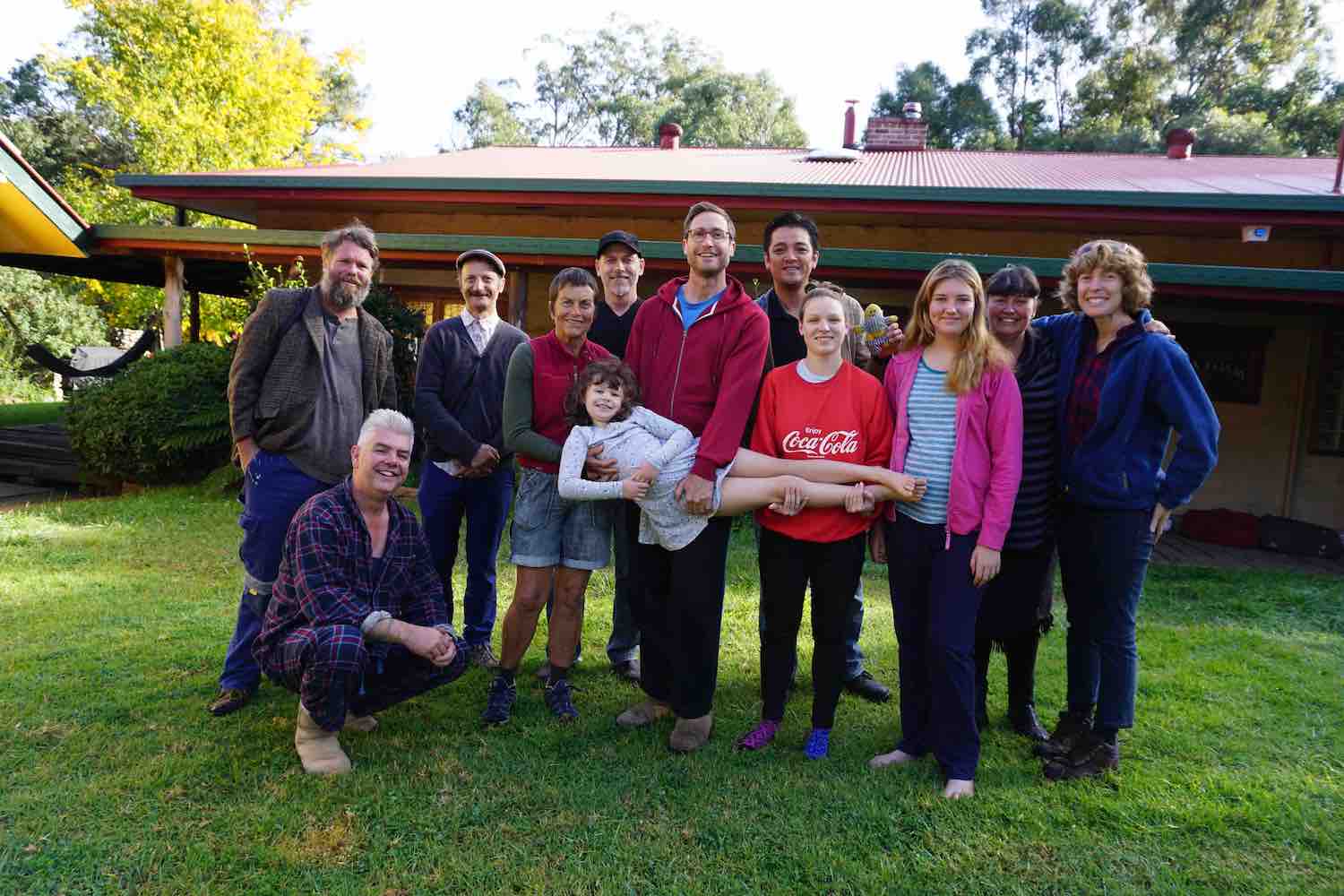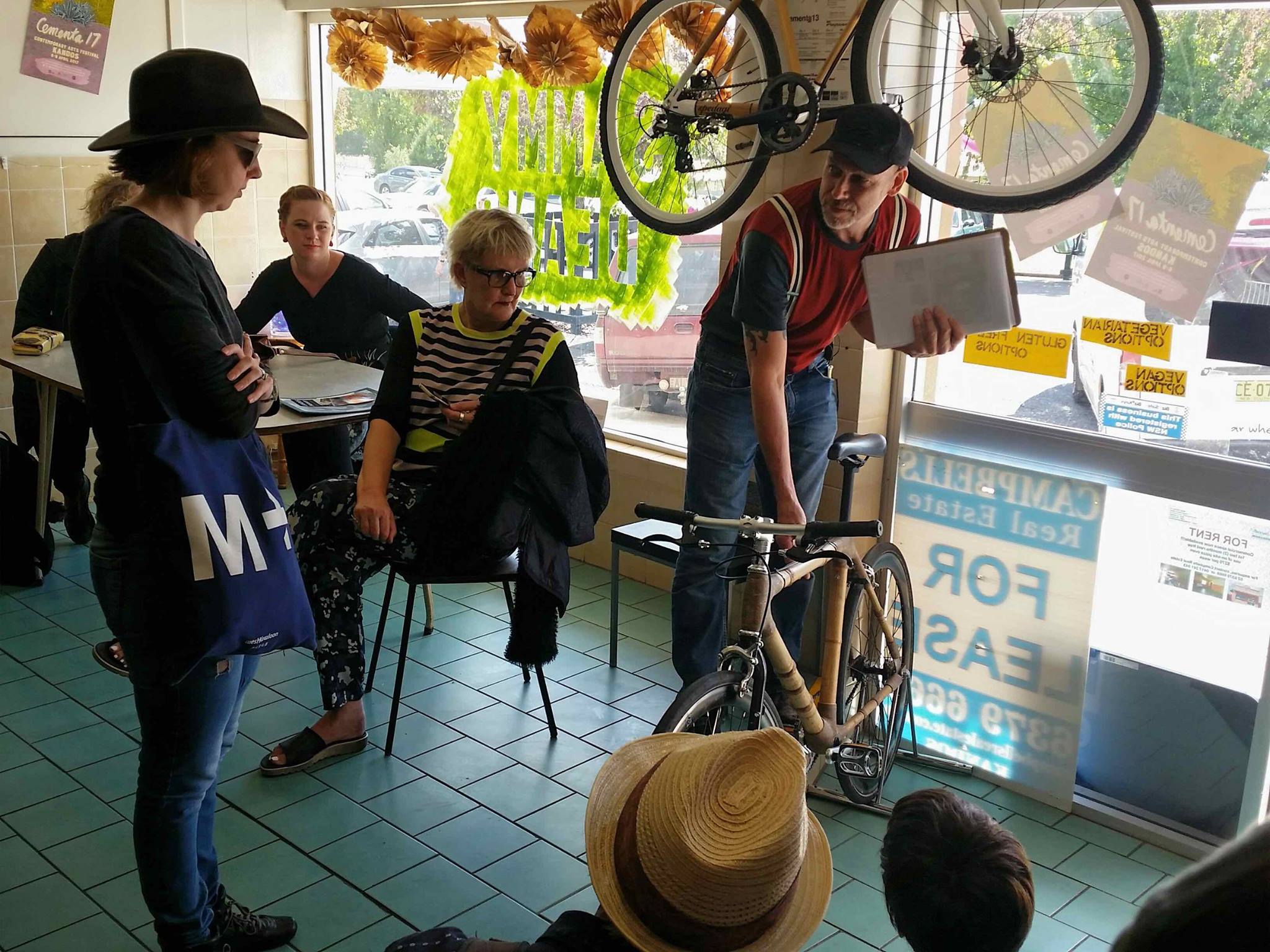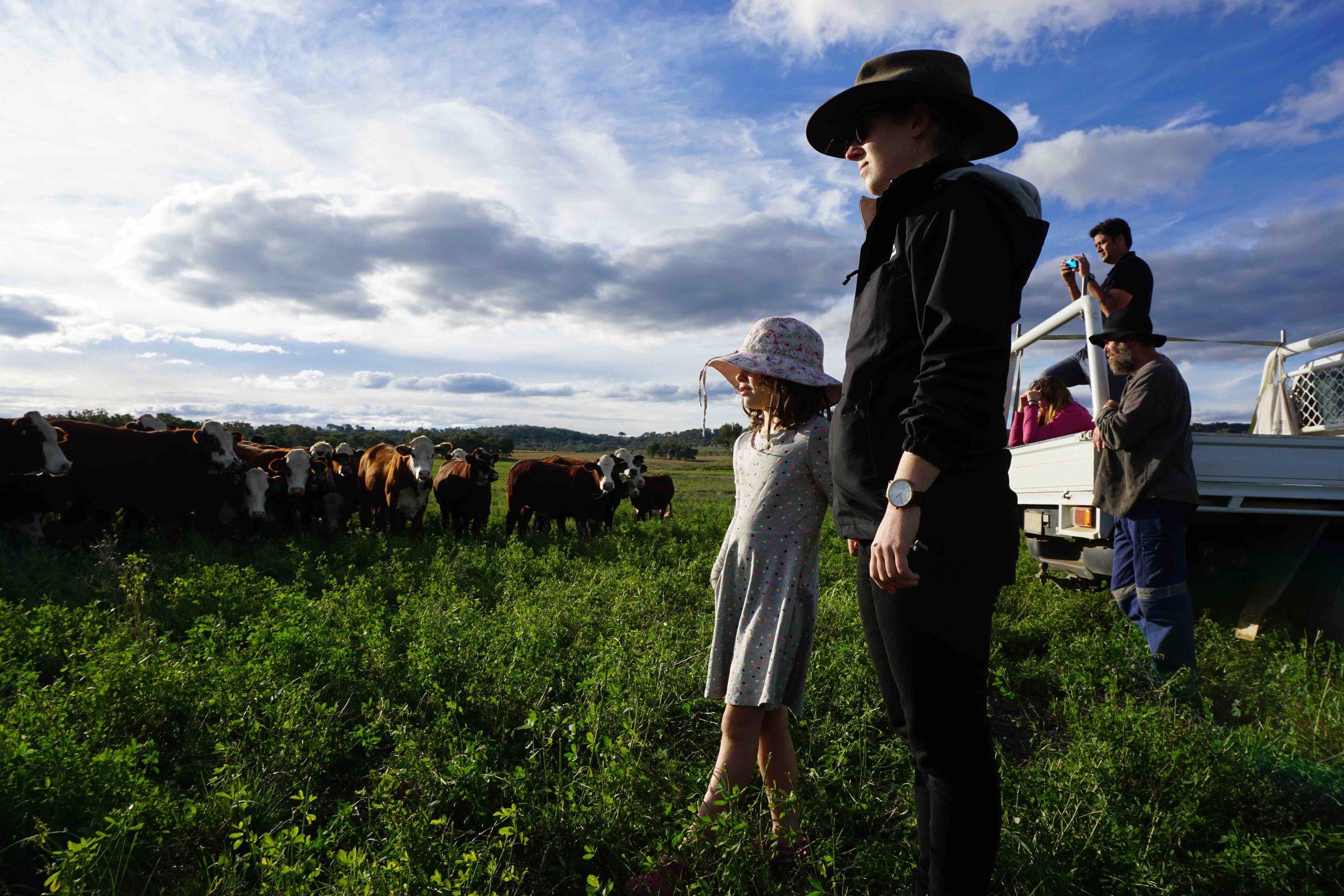The Kandos School of Cultural Adaptation was formed in early 2016 by a group of people keen to pursue an idea of art as any activity that brings about cultural change. Much of its work revolves around the post-industrial town of Kandos, in Wiradjuri country, in the Central West of NSW. However its members come from many places, and its projects bridge urban, regional and rural Australia.
Where does a name like ‘Kandos School of Cultural Adaptation’ come from?
Kandos School of Cultural Adaptation was conceived by artist Ian Milliss* at Cementa13, a contemporary art festival in Kandos, NSW. Ian’s work for the festival was “Welcome to Kandos,” a poster presenting a number of fictional projects, ambitious and highly innovative, as an alternative history for the town of Kandos.
Here is the poster:
Emboldened by Ian’s lead, fellow Cementa artist Gilbert Grace proposed manifesting these fictions in real terms for the Cementa17 festival. This meshed well with Alex Wisser’s desire to establish a land-based residency for artists who work with land, agricultural innovation, and ecological phenomena. A bunch of other artists and writers all piled on board, and KSCA was born!
What do we mean by 'cultural adaptation'?
The idea of cultural adaptation takes its lead from Australian philosopher Donald Brook, who had some interesting things to say about the modern structures of art. Brook pointed out that creative and experimental acts have been occurring for a lot longer than we have had the institutions that currently define art. Indeed, human culture would never evolve unless such things were occurring in all streams of life. He suggests that we should expand our understanding of “art” to include any activity that enables humans to discover new ways of acting in the world – in other words, any activity that changes culture.
Ian Milliss has been making the case for 'cultural adaptation' for a long time. Ian began exhibiting in 1967 as the youngest member of the Central Street Gallery group and one of Australia’s first conceptual artists. From 1971 he developed a practice based on cultural activism working with community and political groups, arguing that the artist’s role is the adaptation and innovation of cultural memes rather than content production for the art market. He has worked in the Green Bans, prison reform and trade union movements and has dealt with a wide range of cultural issues including workers and artists rights, sustainable farming, heritage and conservation, and climate change. We love you Ian.
Read more about cultural adaptation here:
Grace, Gilbert (2017) ‘Welcome to Kandos’ Futurelands2 newspaper, page 5.
Brook, Donald (2008) Experimental Art. Studies in Material Thinking, no. 8. https://www.materialthinking.org/people/donald-brook
Milliss, Ian (2010) ‘Adapt or Die’ Artlink, 30:2, https://www.artlink.com.au/articles/3399/adapt-or-die/
Alex Wisser (2017) ‘Futurelands2: on cultural adaptation’, Futurelands2 newspaper, pages 6-7.













